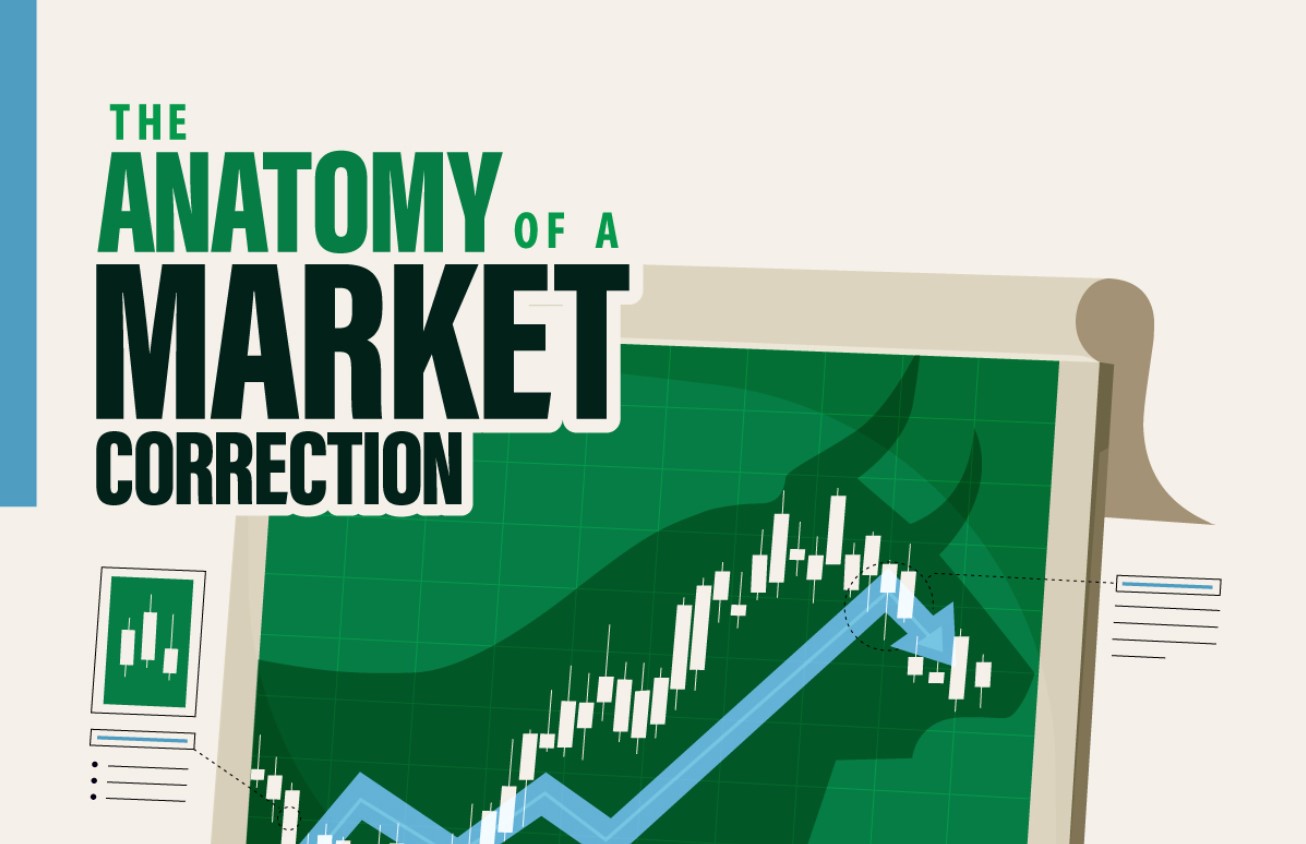Markets are rarely a straight march forward.
Even though the end destination is usually a bullish one, markets often take a far more scenic route to get there. Sometimes that means going off the beaten path, and other times it may mean taking a step directly backwards to get reoriented.
In investing parlance, the latter situation can be described as a market correction: a short-term duration market move between -10% and -20%.
These are significant declines that can be a “gut check” for investors, especially for those who haven’t experienced many of them in their investing careers.
Breaking Down a Market Correction
Today’s infographic comes to us from Fisher Investments, and it describes the anatomy of market corrections, while also visualizing much of the data around these common events.
The average market correction looks something like this:
- Frequency:
On average, there is one market correction that occurs each year - Length:
The average correction lasts for 71.6 days - Depth:
The average correction involves a 15.6% decline - Impact:
A correction often results in increases in uncertainty, volatility, and media alarmism.
In the current bull market, there have already been eight corrections. The most noteworthy of these went from May 21, 2015 until February 11, 2016 and resulted in a -18.9% fall in stock prices.
Bull or Bear?
One of the biggest challenges created by market corrections is that they are also far from straightforward.
Corrections can be over in two weeks, or it can take almost a year for a correction to eventually revert back to a bull market. To complicate matters, there is also a chance that a correction may turn into a bear market – a fundamentally-driven and sustained decline where the market dips 20% or more.
While every correction is different, data can also help paint a clearer picture: between 1980-2016 there were 36 corrections in the U.S. market, and only five of them (about 14%) resulted in longer, sustained bear markets.
The flipside of this, however, means that 86% of the time, a correction ends up just being a blip on the radar of an otherwise intact bull market.
In other words, the vast majority of corrections end up providing an opportunity for smart investors to take advantage of lower prices before a bull market continues its climb.
Article by Visual Capitalist


